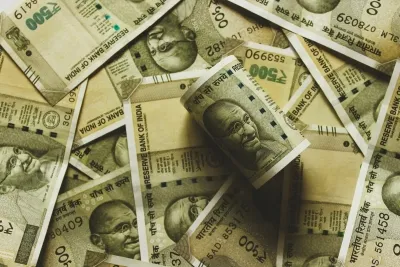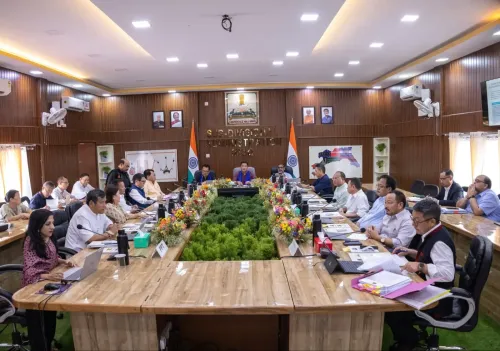Is Gujarat Leading India’s Income Growth? MP Shows Promise as Southern and Western States Maintain Earnings Edge

Synopsis
Key Takeaways
- Gujarat leads with a per capita NSDP of Rs 1.96 lakh.
- Madhya Pradesh shows significant growth, rising to Rs 67,300.
- States like Karnataka and Tamil Nadu contribute robustly to GDP.
- Overall economic growth is uneven across regions.
- Investment and policy focus are vital for agricultural regions.
New Delhi, Aug 7 (NationPress) Gujarat has solidified its position as the leader among India’s major states, achieving a per capita Net State Domestic Product (NSDP)—a reliable indicator of average income—of Rs 1.96 lakh.
Karnataka closely follows with Rs 1.92 lakh, succeeded by Haryana at Rs 1.83 lakh and Tamil Nadu at Rs 1.80 lakh.
States like Gujarat, Karnataka, and Tamil Nadu contribute between 8 to 9 percent to the national GDP.
However, Maharashtra has seen its per capita income growth lag behind its counterparts over the last decade, indicating a disconnection between overall economic output and individual wealth.
An overview of India’s economic landscape shows a significant shift towards the West and South, with states like Maharashtra, Gujarat, Karnataka, and Tamil Nadu consistently leading in performance. In contrast, Madhya Pradesh has shown a more promising growth trajectory.
Its per capita NSDP has surged from Rs 38,497 in 2011–12 to Rs 67,300 in 2023–24, marking an impressive average annual growth rate of 4.8 percent.
During a recent parliamentary session, Union Minister of State for Finance Pankaj Chaudhary shared state-wise data regarding per capita income.
These statistics are adjusted for constant 2011–12 prices, which eliminates inflation effects and provides a clearer view of real income growth over time.
This growth rate outpaces that of traditionally affluent states like Maharashtra (4.3 percent) and Haryana (4.6 percent).
Karnataka and Tamil Nadu attribute their high figures to effective governance and continuous policy efforts.
As a reference point, India’s national per capita income for 2023–24 is Rs 1.09 lakh at constant prices, and Rs 1.89 lakh at current prices.
Northern states like Punjab, Haryana, Uttarakhand, and Himachal Pradesh also display relatively high income levels.
This regional disparity is mainly due to the sustained growth in the industrial, services, and information technology sectors in the South and West, while agricultural productivity supports states like Punjab and Haryana.
In terms of total contribution to India’s GDP, Maharashtra has traditionally held the lead, contributing around 13 percent of the national output.
While data for the 2024–25 fiscal year is available for only 16 of India’s 28 states, the complete dataset from 2023–24 provides an insightful look into regional wealth.
Since 2011–12, Gujarat has consistently topped the per capita NSDP rankings, with Karnataka close behind.
Tamil Nadu has recently made significant progress, surpassing Haryana and narrowing the gap with Telangana.
In 2023–24, Telangana’s per capita income was 1.94 times the national average, while Andhra Pradesh reached 1.32.
Moreover, Uttarakhand recorded an income of 1.41 times the national average, while Uttar Pradesh fell at 0.51. Chhattisgarh reported a ratio of 0.8, slightly surpassing Madhya Pradesh’s 0.77.
Notably, Madhya Pradesh has bounced back from economic challenges following its bifurcation. Its income level, which was around 60–65 percent of the national average in 2000–01 and 2010–11, has since improved.
This experience highlights the potential for economic growth, even in agriculture-centric regions, provided there is ongoing investment and a focused policy approach.









